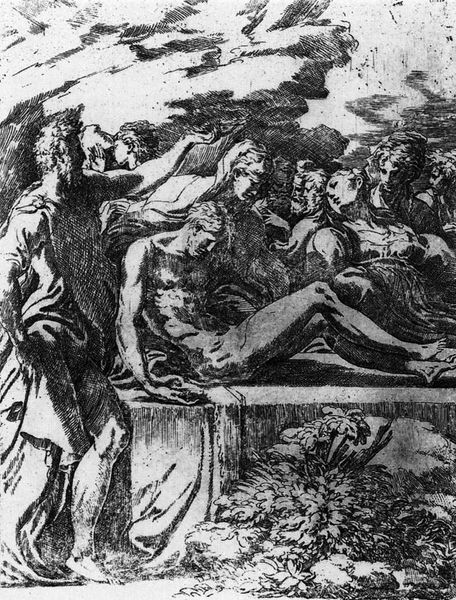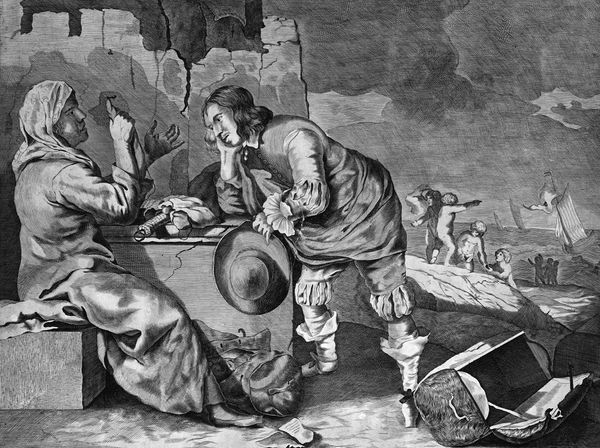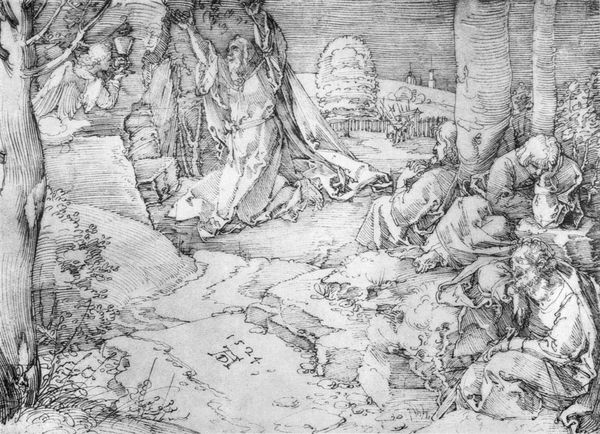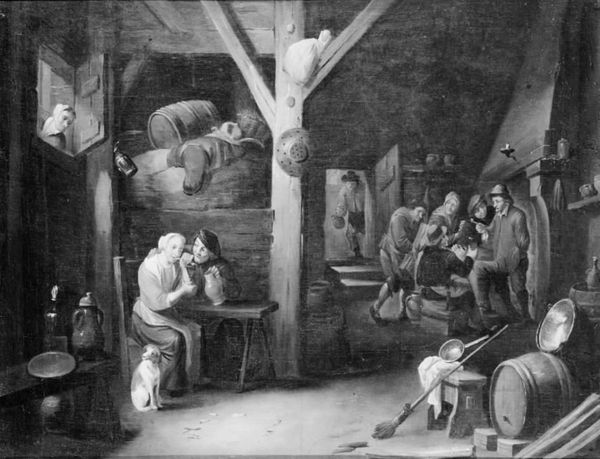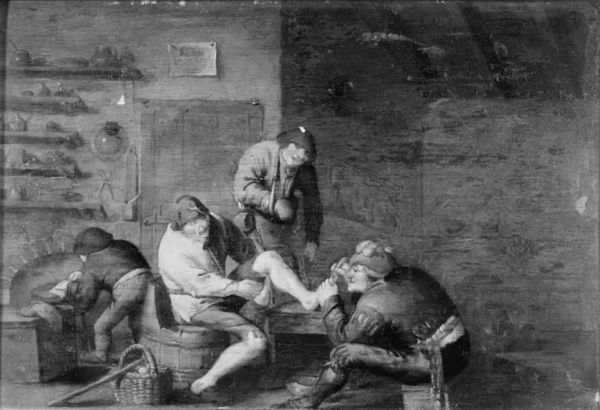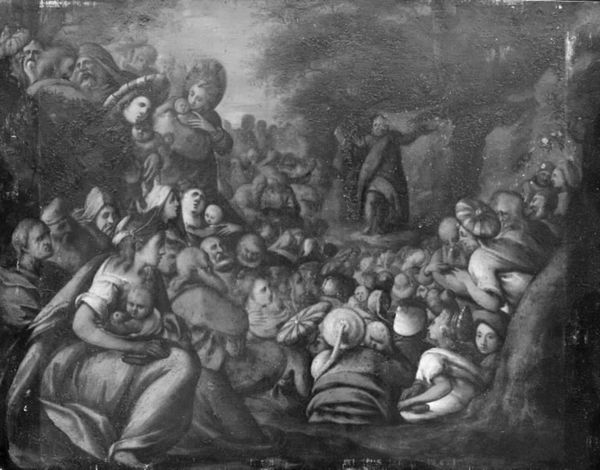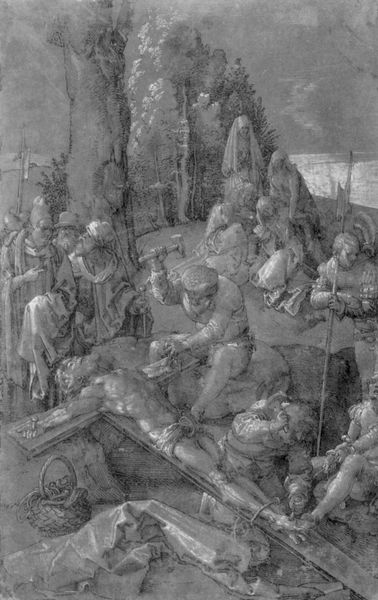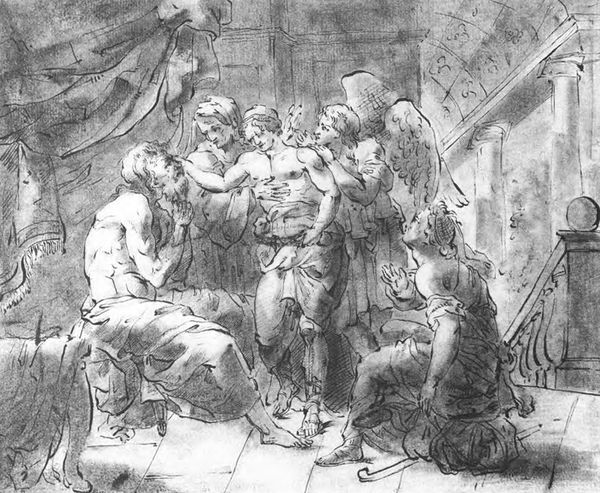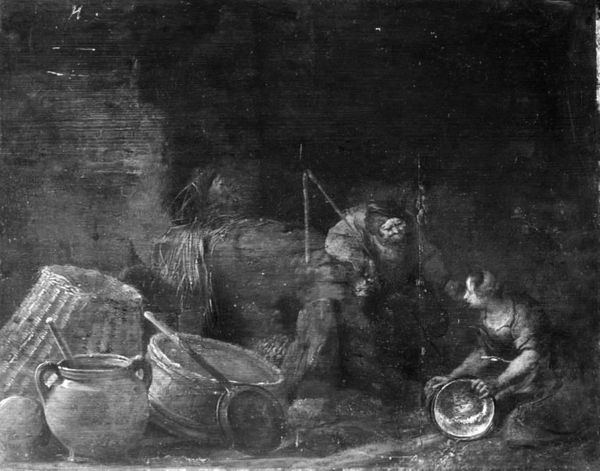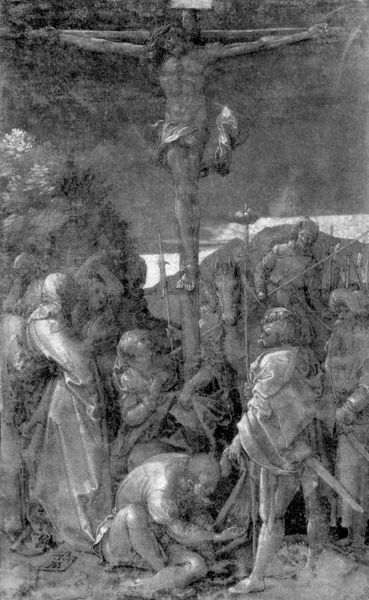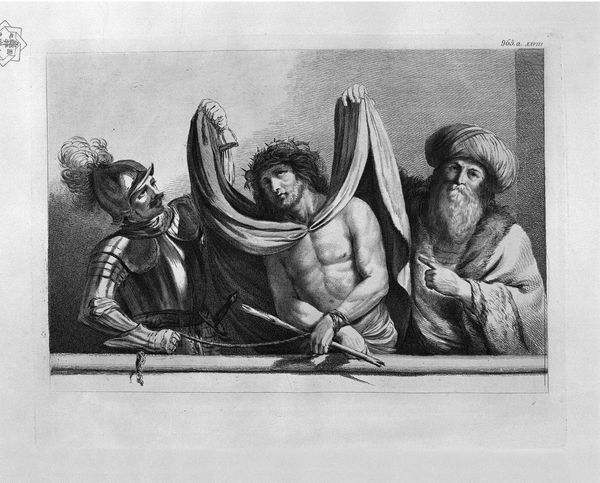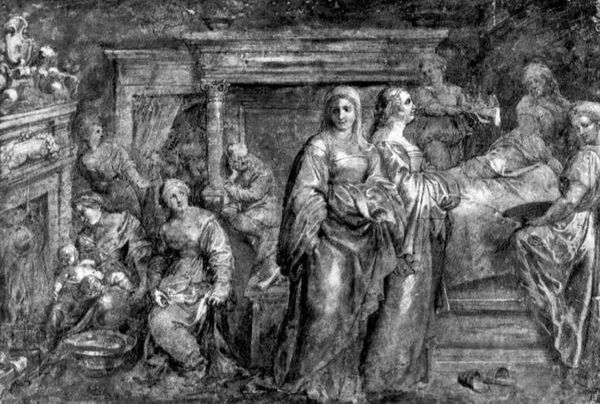
painting
portrait
baroque
painting
sculpture
figuration
genre-painting
monochrome
monochrome
Dimensions: 21 x 44 cm
Copyright: Public domain
Curator: Here we have "The Society near Fountain" painted by Peter Paul Rubens around 1635. What are your first impressions? Editor: Immediately, the monochromatic palette lends a somewhat somber air despite the lively scene of figures gathered near what appears to be a bridge or fountain. There's an interesting tension between the seemingly spontaneous groupings and the carefully constructed composition. Curator: Yes, I sense that duality, too. The artist uses grayscale to present an array of characters within this elegant space. It whispers stories of shared pastimes. Can’t you just feel that carefree gathering near water’s edge? It is also clearly influenced by genre painting from the Baroque style of art making. Editor: Absolutely. Looking closer, I'm drawn to the materiality of the work. What specific techniques might Rubens have employed to create this effect? Was it primarily brushwork, or might he have used other tools to build the textures we see here? We should examine what underpainting he may have utilized as well. It looks almost as though the labor of the artist is concealed or downplayed as a presentation technique in an of itself. Curator: Indeed. His expert handling gives it all a remarkable illusion. Rubens plays cleverly with light and shadow to emphasize the figures' interactions, evoking everything from tender affections to idle diversions. And look, isn’t that a sculpture in the background? Fascinating. Editor: Right. What are the social and economic conditions that permitted a wealthy patron like Rubens to create and support the means of cultural production? How might a different social or economic context shift the kind of subject matter explored in painting? Curator: Now, I see reflections that almost function like ghosts or hidden stories under this social gathering near a fountain. The underpainting and reflections remind us to ponder our interactions; the depth of art is almost infinite. It inspires and reflects me at the same time. Editor: Precisely. To understand a work of art such as this fully we need to place into its broader historical and economic circumstances and its conditions of creation. Understanding the physical creation opens it to us more so than simple admiration or appreciation. Curator: Well said, delving deeper than just appearances indeed reveals a lot about an artwork's impact on not just the observer but creator, too. Editor: A rewarding view that has certainly changed my appreciation.
Comments
No comments
Be the first to comment and join the conversation on the ultimate creative platform.
